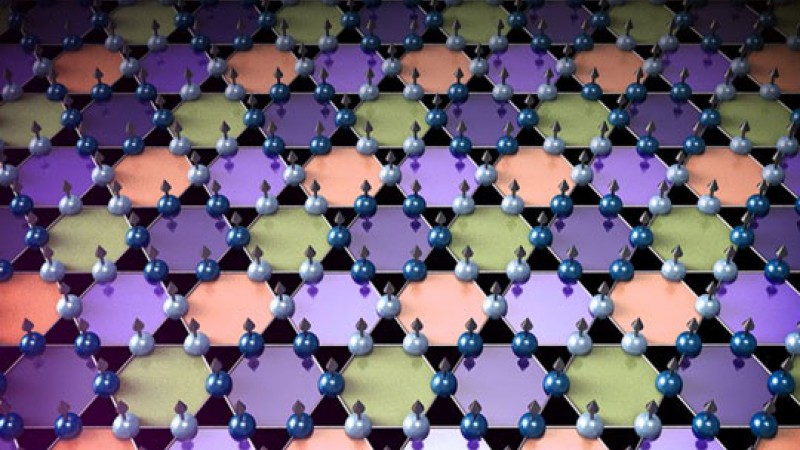Article courtesy of Rice University
Written by Jade Boyd
HOUSTON – (Sept. 14, 2022) – Physicists have discovered a material in which atoms are arranged in a way that so frustrates the movement of electrons that they engage in a collective dance where their electronic and magnetic natures appear to both compete and cooperate in unexpected ways.
Led by Rice University physicists, the research was published online today in Nature. In experiments at Rice, Oak Ridge National Laboratory (ORNL), SLAC National Accelerator Laboratory, Lawrence Berkeley National Laboratory (LBNL), the University of Washington (UW), Princeton University and the University of California, Berkeley, researchers studied pure iron-germanium crystals and discovered standing waves of fluid electrons appeared spontaneously within the crystals when they were cooled to a critically low temperature. Intriguingly, the charge density waves arose while the material was in a magnetic state, to which it had transitioned at a higher temperature.
“A charge density wave typically occurs in materials that have no magnetism,” said study co-corresponding author Pengcheng Dai of Rice. “Materials that have both a charge density wave and magnetism are actually rare. Even more rare are those where the charge density wave and magnetism ‘talk’ to each other, as they appear to be doing in this case.”
“Usually, the charge density wave occurs concurrently with magnetism or at a higher temperature than the magnetic transition,” he said. “This particular case appears to be special, because the charge density wave actually occurs at a temperature much lower than magnetism. We do not know of any other example where this actually happens in a material like this one, which features a kagome lattice. That suggests that it could be related to the magnetism.”
+Click here to read the full story
Neutron scattering measurements for this study were performed at ORNL's Spallation Neutron Source (SNS) using the CORELLI spectrometer.
Study co-authors include Xiaokun Teng, Lebing Chen, Kelly Neubauer, Bin Gao, and Yaofeng Xie of Rice; Feng Ye of ORNL; Elliott Rosenberg, Zhaoyu Liu and Jiun-Haw Chu of UW; Jia-Xin Yin, Yu-Xiao Jiang and Zahid Hasan of Princeton; Ji Seop Oh of both Rice and UC Berkeley; Robert Birgeneau of UC Berkeley; Makoto Hashimoto and Donghui Lu of SLAC; and Chris Jozwiak, Aaron Bostwick and Eli Rotenberg of LBNL.
SNS is a Department of Energy Office of Science user facility. UT-Battelle manages ORNL for the DOE Office of Science. The Office of Science is the single largest supporter of basic research in the physical sciences in the United States and is working to address some of the most pressing challenges of our time. For more information, please visit www.energy.gov/science.






